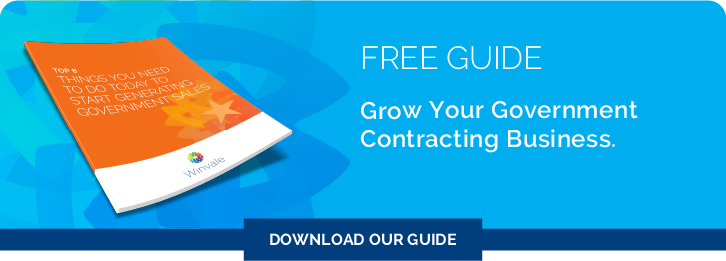Getting Professional Proposal Support: The Dos and Don'ts
GSA Schedule | Government Business Development | 2 Min Read
 Responding to a government Request for Proposal (RFP) can be a daunting task. I have often heard the comment “I don’t even know where to start.” It is normal for companies, both large and small, to use outside proposal support to help them through this process. But before you run out and hire a proposal company to help you on your next big proposal, read through our Do’s and Don’ts to ensure that your dollars are being spent wisely.
Responding to a government Request for Proposal (RFP) can be a daunting task. I have often heard the comment “I don’t even know where to start.” It is normal for companies, both large and small, to use outside proposal support to help them through this process. But before you run out and hire a proposal company to help you on your next big proposal, read through our Do’s and Don’ts to ensure that your dollars are being spent wisely.
Do Respond
Do make the commitment to respond. Regardless of the number of proposal professionals you bring in, your company needs to be available to ensure that what is being written accurately reflects your solution. Proposal professionals need access to past performance details, resumes and SME’s to write their sections. Therefore, the people in your company who can provide these details need to be available for questions. With response times running about 30 days on average, your folks will most likely be working late or on weekends to complete writing assignments. Ultimately, this is your company’s response, and you need to be accountable for what is promising.
Do Decide
Do your homework ahead of time and make an initial Bid/No Bid decision. The last thing you want to happen is two weeks in, you learn that you don’t qualify or can’t bid. You still need to pay for the services and in the end you’ll end up with no business. If you are unsure of what the qualification and criteria are, go ahead and invest in a few hours with a strategist who can help you make this decision. Most proposal companies have access employees who can help with this. It’s inevitable that an amendment of some sort will be issued, or that some of the criteria will have changed from the draft RFP to the final, but 90% of the time these are minor changes and can easily be accommodated. Any major issues or deal-breakers should be identified as soon as possible.
Don’t Wait
Don’t wait until the last minute before asking some proposal support person for help. Anyone who has worked on an RFP can tell you that time is precious. If you have 30 days to respond to an RFP, and you wait a week after the release to even start your response, chances are you are already late to the game. However, if at this point, you must still put a response out, be prepared to shell out additional funding for last minute or extra resources needed to complete the response.
Don’t Forget
Don’t forget the pricing. Often times, everyone is so focused on compiling the solution’s response that pricing is left to the last minute. It is important to note that most proposal writers and managers will not touch the pricing volume. If you are responding to the RFP as a single vendor and not as a team, chances are you can handle pricing in-house. If you are have multiple teaming partners or have never put together pricing, consider bringing a Pricing Volume Lead onto the team to help you coordinate and put together your pricing volume. There are also proposal professionals who specialize on how to price your proposal to win.
In Summary
We hope that you’ll find these Do’s and Don’ts both relevant and helpful as you decide how you should best respond to RFP’s. Though you will probably have to deal with pricing eventually, our list should help you determine whether or not that time is now. Use your resources wisely as you vie for your next proposal win.
About Kevin Lancaster
Kevin Lancaster leads Winvale’s corporate growth strategies in both the commercial and government markets. He develops and drives solutions to meet Winvale’s business goals while enabling an operating model to help staff identify and respond to emerging trends that affect both Winvale and the clients it serves. He is integrally involved in all aspects of managing the firm’s operations and workforce, leading efforts to improve productivity, profitability, and customer satisfaction.






